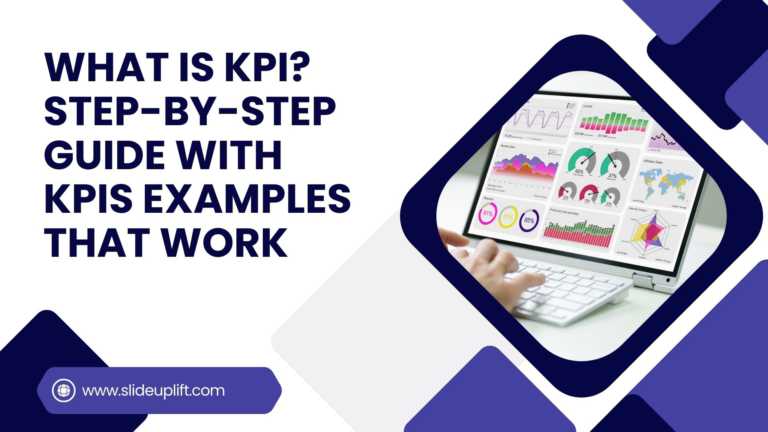How to Create a Project Charter Presentation?
A project charter serves as the foundational document that officially initiates a project and grants authority to the project manager. This concise yet comprehensive document outlines the project’s purpose, objectives, scope, stakeholders, and key constraints.
Created typically by a project sponsor or initiator, the project charter sets the overall vision and provides a guiding framework for the project team. It is a key reference point throughout the project life cycle, ensuring alignment with organizational goals and facilitating effective stakeholder communication. This blog will familiarize you with the importance of a project charter, things to include in it, and how to write one.
What is a Project Charter?
A Project charter is short and straightforward document that states a project’s purpose. It serves as the foundation of a project, while providing the written authority for project managers to officially begin the work.
It documents the project objectives, roles and responsibilities, scope, purpose, success metrics, key players, goals, and an accomplishment plan. A charter gives the team and project managers a sense of purpose and direction.
The project charter is a go-to guide that helps keep the project on track and aligned with the project goals. It is an important part of project planning as it is used throughout the project lifecycle.
When you search the term “Project Charter”, you might come across various definitions explaining the project charter’s different components. The PMBOK® Guide defines a project charter in project management as:
“A project charter is a document issued by the project initiator or sponsor that formally authorizes the existence of a project, and provides the project manager with the authority to apply organizational resources to project activities.”
In project management, a charter is a document that grants permission for a project to exist and gives the project manager the authority to carry out the task. The purpose of a project charter becomes clearer in this definition.
What is the Purpose of a Project Charter?

How to Create a Project Charter Presentation
The purpose of a project charter is to serve as a foundational document that defines and communicates the essential aspects of a project. A project charter is required to authorize your project for the stakeholders. The charter establishes a common understanding among project team members and stakeholders regarding the project’s goals, deliverables, and key milestones.
By clearly defining roles, and responsibilities, and approval processes, the charter helps prevent low-engagement scenarios and promotes efficient project execution. A project charter can be used depending on the project size and the company’s management practices, be it a formal or an informal document used internally. Also, it serves as a reference point for decision-making, risk management, and communication throughout the project lifecycle.
Project Charter V/s Project Plan V/s Business Case
A project charter is a high-level document that marks the formal beginning of a project. Its primary purpose is to define the project’s objectives, scope, stakeholders, and overall vision. A project charter typically includes the project title, background, objectives, scope, stakeholders, constraints, assumptions, and high-level timelines. It provides a comprehensive justification for the project from a business standpoint.
On the other hand, the project plan is a comprehensive document after the project charter. Its purpose is to provide a roadmap for the execution of the project. It outlines the tasks, activities, timelines, resource allocations, and dependencies required to achieve the project objectives.
Meanwhile, the Business Case is a document that outlines the reasons for undertaking the project from a business perspective. This includes potential benefits, costs, risks, and the expected return on investment (ROI). The business case helps decision-makers evaluate whether the project is worth pursuing. It helps stakeholders understand the rationale for investing resources in the project.
The key differences between the project charter, project plan, and business case are listed below:
| Project Charter | Project Plan | Business Case |
| Initiates the project and defines objectives and scope. | Guides project execution and outlines detailed tasks. | Justifies the project from a business perspective. |
| Contains project title, background, objectives, scope, etc. | Contains tasks, milestones, timelines, resources, budget, etc. | Contains business problem analysis, solutions, cost-benefit, and risks. |
| Answer the “What” and “Why” of the project. | Answers “How” of the project. | Answers business rationale and provides justification. |
| Initiated at the start of the project. | Developed after the project charter. | Developed before the project charter. |
| Prepared by a project sponsor or manager. | Prepared by the project manager and planning team. | Prepared by business analysts or project stakeholders. |
| Sets the foundation for the project. | Guides the project team during execution. | Assists decision-makers in evaluating the project’s worth. |
How to Create a Project Charter?
Creating an effective project charter is crucial for setting the foundation and direction of a project. The more thorough a project charter is, the better reference it will become for the future. Below are a few things you should include in your project charter to make it more persuasive:
- Introduce the Project and the team.
- Determine Project Objectives, Scope, and Deliverables.
- Identify the Stakeholders.
- Create Timeline and Milestones.
- Build the Project Budget.
- Identify Risks and Mitigation Strategies.
- Note Key Assumptions & Constraints.
- Define Project Dependencies and Success Criteria.
1. Introduce the Project And the Team
A project charter documents the project’s information and team member’s roles and responsibilities. The project information includes its name, who the project sponsors are, the project managers, and who the stakeholders are.
Start with a clear and concise title that reflects the project’s purpose. Provide a brief introduction, including the project’s background, objectives, and the problem it aims to solve. Introduce the project team members, including their roles and responsibilities. This clarifies the structure and ensures everyone understands their contributions.
2. Determine Project Objectives, Scope, and Deliverables
The project managers should clearly state the project’s objectives, outlining what to achieve. Be specific and measurable to set a clear direction for the team. Define the project’s scope, specifying what is included and what is not. This helps manage expectations and prevents scope creep. List the deliverables – the tangible outcomes or results expected from the project. To ensure that the project meets its expected deliverables, project managers set certain boundaries via the scope of work (SOW).
3. Identify the Stakeholders
Identify and list all stakeholders, including their roles and responsibilities. This ensures everyone knows who is involved and what is expected of them. Ensure the interests of all project stakeholders are highlighted in the charter, including:
- End-users,
- Project Sponsor,
- Project Team Members
4. Create Timeline and Milestones
A high-level project timeline helps outline key milestones and deadlines. Once the vision and project structure are clear, you must develop a plan to implement it. This helps everyone show key deliverables, milestones, and expected progress. Also, list high-level milestones and project phases to showcase the project’s life cycle.
5. Build the Project Budget
Specify the budget, breaking down costs as much as possible. This helps manage financial expectations and ensures resources are allocated appropriately.
6. Identify Risks and Mitigation Strategies
Identify potential risks that could affect the project and provide strategies for mitigating or managing these risks.
7. Note Key Assumptions & Constraints
Clearly state any assumptions made during the project planning. This helps to manage expectations and provides transparency about uncertainties. Outline any limitations or constraints that may impact the project, such as budgetary restrictions, time constraints, or resource limitations.
8. Define Project Dependencies and Success Criteria
Identify any dependencies that could impact the project schedule or outcomes. This helps in planning and managing potential bottlenecks. Clearly define the criteria that will determine the success of the project. This provides a benchmark for evaluation.
Project Charter Examples
Now that you’ve understood the importance of a project charter in project management, and how to create one, here are some examples that will help you in the creation process. Below is an example of a well-designed project charter for context. It has all the elements that you need to include in your charter document, which can be personalized as per your need.

How to Create a Project Charter Presentation
1. Title:
Project Title: New Website Development for XYZ Corporation
2. Introduction:
Briefly introduce the project, emphasizing the need for a modern and user-friendly website to enhance the online presence of XYZ Corporation.
3. Project Objectives:
- Develop a visually appealing and responsive website.
- Improve user experience and navigation.
- Increase online engagement and lead generation.
4. Scope and Deliverables:
- Scope: Design and development of a new website, content creation, and integration with social media platforms.
- Deliverables: Fully functional website with updated content, improved navigation, and integrated social media links.
5. Stakeholders:
- Project Sponsor: [Sponsor’s Name]
- Project Manager: [Manager’s Name]
- Marketing Department
- IT Department
- External Web Development Team
6. Project Team:
- Project Manager: [Manager’s Name]
- Web Designer: [Designer’s Name]
- Content Writer: [Writer’s Name]
- IT Specialist: [Specialist’s Name]
7. Constraints:
- Budgetary constraints: $50,000.
- Time constraints: Website launch within 3 months.
8. Assumptions:
- Availability of necessary content and media files.
- Timely feedback from stakeholders during the design and development phases
9. Risks and Mitigation Strategies:
- Risk: Delay in content creation. Technical issues during website development.
- Mitigation: Establish a content creation timeline with stakeholders and allocate additional resources if needed. Regular testing and quality assurance throughout the development process.
10. Timeline and Milestones:
- Week 1-2: Project kickoff and requirements gathering.
- Week 3-4: Design phase and stakeholder feedback.
- Week 5-6: Content creation and review.
- Week 7-9: Development and testing.
- Week 10: Final review and website launch.
11. Budget:
- Web Development Team: $35,000
- Content Creation: $10,000
- Contingency: $5,000
12. Approval and Sign-off:
- Project Sponsor: [Sponsor’s Name]
- Project Manager: [Manager’s Name]
13. Review and Update Process:
- Weekly progress meetings with the project team.
- Bi-weekly updates to stakeholders.
14. Communication Plan:
- Regular email updates to stakeholders.
- Stakeholder meetings during key project milestones.
15. Dependencies:
- Timely provision of content by the marketing department.
- Availability of the IT department for technical support.
16. Success Criteria:
- Successful launch of the new website.
- Positive feedback from users and stakeholders.
- Increased online engagement and lead generation metrics.
This example provides a framework for a project charter tailored to developing a new website, emphasizing key elements such as objectives, scope, stakeholders, and success criteria. Adjustments can be made based on the specific requirements of the project.
The specifics of a project charter may vary based on the organization’s templates and requirements. The key is clearly defining the project’s purpose, scope, stakeholders, and major milestones to provide a solid foundation for successful project management.
Tips on the Best Practices for Project Charter in Project Management
By now, you must have understood how to create a process charter. Using the process mentioned above, you can create a charter document as per your requirement in order to keep the project on track. Here are some tips that will add to the overall quality of your project charter. These will add extra value to the performance of your charter document.
- The vision statement must highlight the purpose and define the project’s end goal. The vision must include the following:
- Objective
- Scope
- Deliverables
- Ensure that the interests of all the stakeholders of the project are highlighted.
- End-user: Who is the end-user in the context of the Project? How will the project fulfill his requirements?
- Project Sponsor: What are the end goals of the Project Sponsor? How will he benefit from the Project?
- Project Team: Identify team members and their roles and responsibilities, ensuring a clear understanding of the lines of reporting between team members.
- Showcase a high-level execution roadmap of the project. Once the vision and project structure are clear, you need to develop a plan to implement it. List down high-level milestones and project phases that would showcase the project’s entire life cycle.
- Highlight risks, issues, and budget. No Project Charter can be complete without highlighting the potential risks and issues that can derail a project. This section should also include assumptions and constraints related to the project.
The key tips outlined here, including stakeholder involvement, clear objective definition, and diligent risk management, contribute to creating a charter that guides teams toward successful project outcomes. Writing an effective project charter is pivotal to the success of any project, providing a solid foundation for planning, execution, and communication.
Project Charter Template
You can create your own project charters with SlideUpLift. We offer a range of professionally designed project charter templates to streamline this process. These templates ensure project managers and teams have a robust framework to initiate and manage projects effectively.
Explore SlideUpLift’s project charter templates to elevate your project management processes and set the stage for project success.
FAQs
-
Who creates the project charter?
The project manager usually writes a project charter. Apart from the project manager, the project sponsor also writes a project charter. However, a sponsor is not as skilled as a project manager while writing a project charter. The sponsor approves the charter made by the project manager.
-
What is the difference between a project charter and statement of work?
A project charter authorizes a project at a high level, providing objectives and direction from a sponsor. On the other hand, a statement of work (SOW) is a detailed contractual document collaboratively outlining the project’s scope, deliverables, and timelines. The charter sets the vision, while the SOW is a specific project blueprint and part of a contractual agreement.
-
What are five things you need in a project charter?
A project charter should always include an overview, an outline of scope, an approximate schedule, a budget estimate, anticipated risks, and key stakeholders. Each of these sections should be brief but as thorough as possible.
-
Where to find the best project charter templates?
You can find your desired project charter templates on SlideUpLift. They are easy to work with and elevate your project management processes with high-quality products.




















